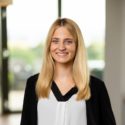What is PPM?
Project Portfolio Management (PPM) refers to the central management of projects in an organisation. PPM takes a birds-eye view of projects to organise budget, workload and timescales of various projects at once. Projects may or may not be connected to each other, but they all fall under one umbrella, known as the portfolio.
PPM tools – what are they and what do they do?
PPM tools offer support in choosing which projects to launch or delay by evaluating potential projects against organisational goals, strategic importance and resource allocation. PPM tools come in a variety of shapes, sizes and levels of complexity. The performance and features of PPM tools differ across sectors to accommodate the different needs and demands of organisations. The reporting function in PPM tools is key for greater visibility of projects. Reports are based on a number of factors that generally include but are not limited to: resources, costs and risks.
The main purpose of a PPM tool is to enable organisations to prioritise various projects effectively and maximise return on investment (ROI). As stated by the Project Management Institute, “Our research has shown that portfolio management is a way to bridge the gap between strategy and implementation”.
Which PPM tool is right for my organisation?
With so many options available, choosing the right PPM tool for an organisation can be challenging. Follow these simple steps to help you choose the right PPM tool for your business:

Requirements
- Define your process for managing portfolio, programmes and projects
- Understand what you need a PPM tool for and the benefits it will bring
- Data is critical – what do you want to capture and report on
- Keep it simple, don’t overcomplicate and stay nimble
Governance
- Determine what your methodology and governance requirements are
- Keep it simple and light. This will give you sufficient control but without unnecessary bureaucracy
- Make sure the governance model is flexible and can be adjusted based on the size, cost and speed of the project
People
- Agree who will be using the PPM tool and what type of access they require
- Understand the skills and map the training needs
- Additional transparency and visibility are often not embraced by users – make sure you understand and deal with their concerns
- Sell the benefits of the PPM tool
To learn more about people and change, view here.
Set-Up
- Understand how you will use the system in years to come – how many users/license/geographies are required
- What type of projects will be managed – IT, Change, Facilities?
- Technical requirements in terms of infrastructure and integration with other systems
Choosing the right PPM tool can be a challenging process, however, by considering each of these steps you will ensure you understand what functionality your business needs, as well as how to strike the right balance, without paying for things that are not needed. If you would like more information about PPM or PPM tools, please contact Esther McMorris estherm@ninefeettall.com.



